These days, it’s been hard to find very many old roses in my area. I see plenty of Knock-Out roses planted in landscapes – more power to them – but antique roses have all but vanished. Even the old species roses that used to grow along the side of the road have vanished.
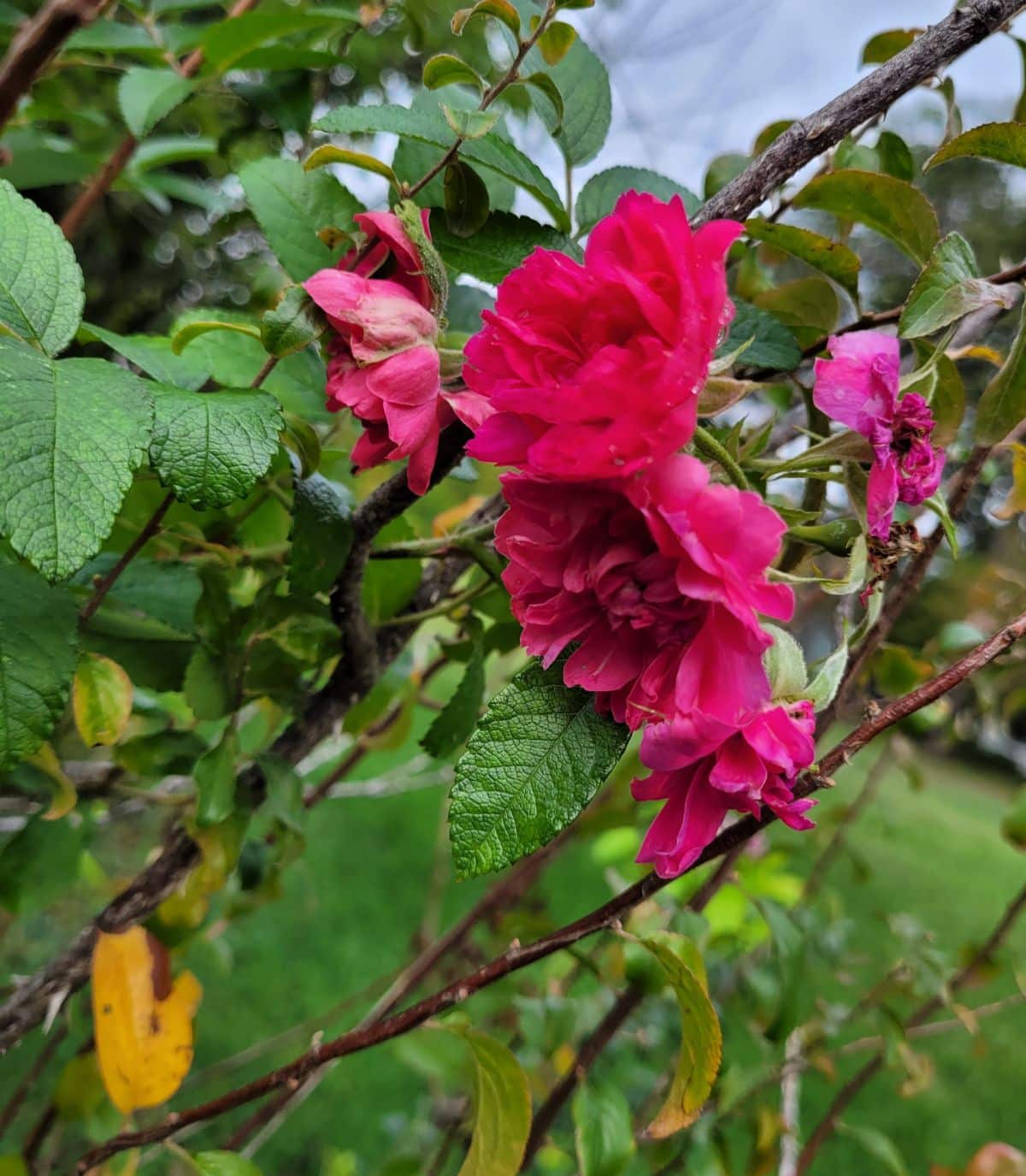
A lot of factors are against those roses.
The largest factor in the loss of these old roses has been rose rosette disease, which is a virus that’s deadly to roses. It has spread through the Midwest like wildfire over the last 30 years.
After working diligently to control rose rosette disease in a municipal rose garden, I managed to keep rose rosette away from over 300 roses. When I left the position and that care stopped, however, the disease killed off all those roses except for one. Rose rosette disease has also taken out the old species roses on the roadsides and antique roses at abandoned houses, and many more besides.
After the emergence of rose rosette disease, the majority of heritage-type roses I’ve found have been tucked into another shrub, hidden under daylilies, or struggling to survive in the woods.
And it’s not just rose rosette destroying old roses. Cemeteries have been cleared of any plants to make them easy to mow. In pursuit of higher yields, farmers have bulldozed every hedgerow that once housed species roses. Most every American Knock Out roses for color.
Jump to:
- Why Do Old Roses Matter?
- Rose Rustling Has a Long and Storied Past
- Preserving Antique and Heirloom Roses
- Rose Patents … And You
- Rules of the Road for Rose Rustlers
- Propagating an Old Rose
- How to Take Cuttings from Antique Roses
- How to Use Tip-Layering to Propagate Old Roses
- Propagating Old Garden Roses with Suckers
Why Do Old Roses Matter?
So why go out searching for old roses? Why is it important to rescue old roses? Can’t you just buy any of these online?
The problem is you can’t buy a lot of old roses online – because many of them are extinct. Despite their excellent qualities, they’ve fallen out of fashion, fallen out of commerce. They’re not being preserved.
In one instance, volunteers had been caring for the Sacramento Historic Rose Garden in the old City Cemetery for over 25 years, in which they maintained hundreds of old roses that pioneer families had planted. They were gorgeous.
But in 2020, the volunteers were kicked out of the cemetery, and the beautiful old roses were cut to the ground. Why? No good reason was ever given.
Old garden roses – antique roses – heirloom roses – are being lost for terrible reasons. They add so much beauty and fragrance to a garden, and they contain so much history.
Fortunately, some people are propagating these roses and saving this history and beauty. You can, too!
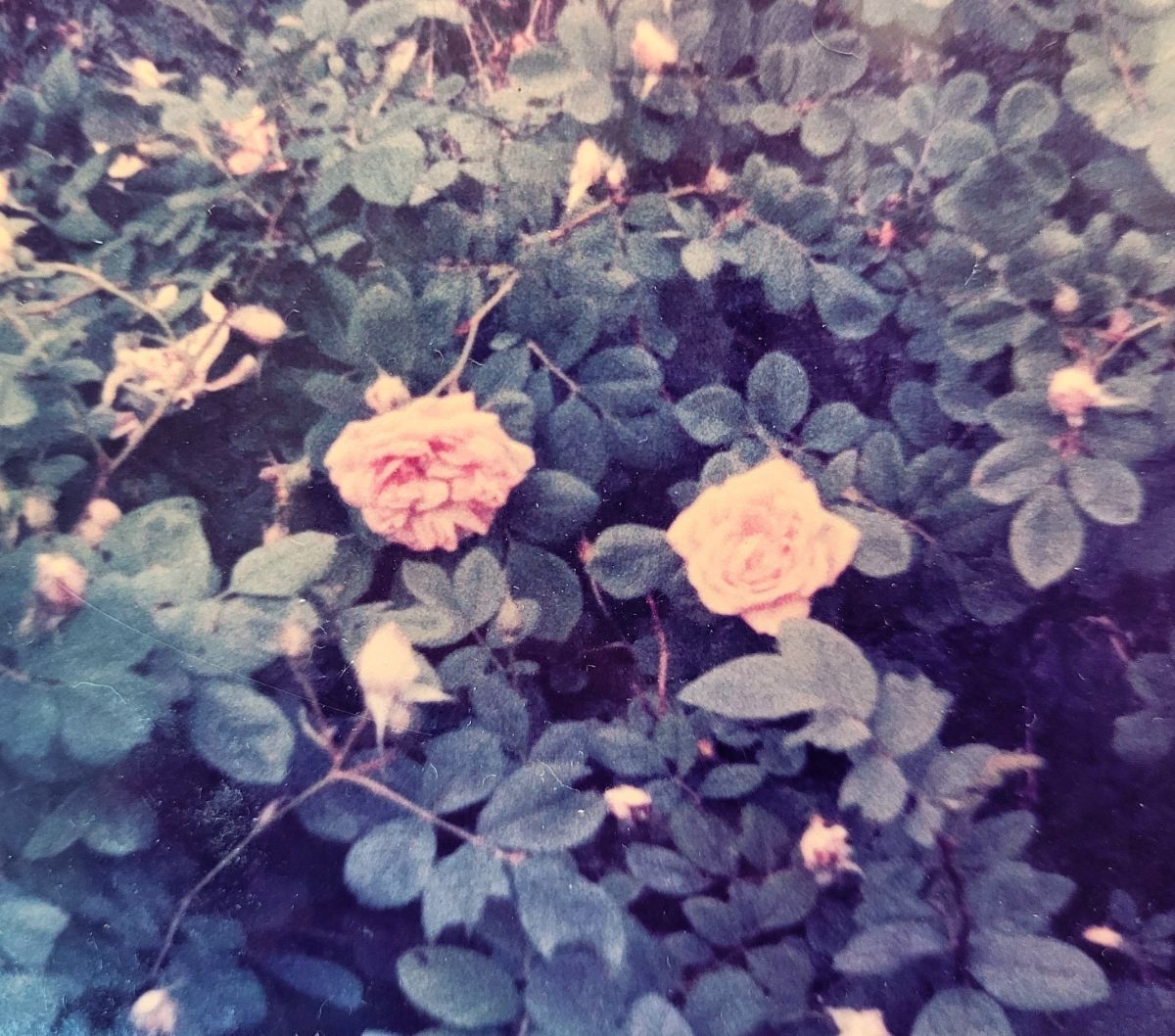
My Aunt Candy has been preserving antique roses. She went around town and found all kinds of old abandoned roses, as well as irises and other gorgeous flowers, and brought them up to grow at her house. She dug upstarts and took cuttings, and did what she needed to keep those old roses alive.
Very few of these roses have survived in their original locations – but they’re blooming and looking absolutely beautiful at Candy’s house.
Rose Rustling Has a Long and Storied Past
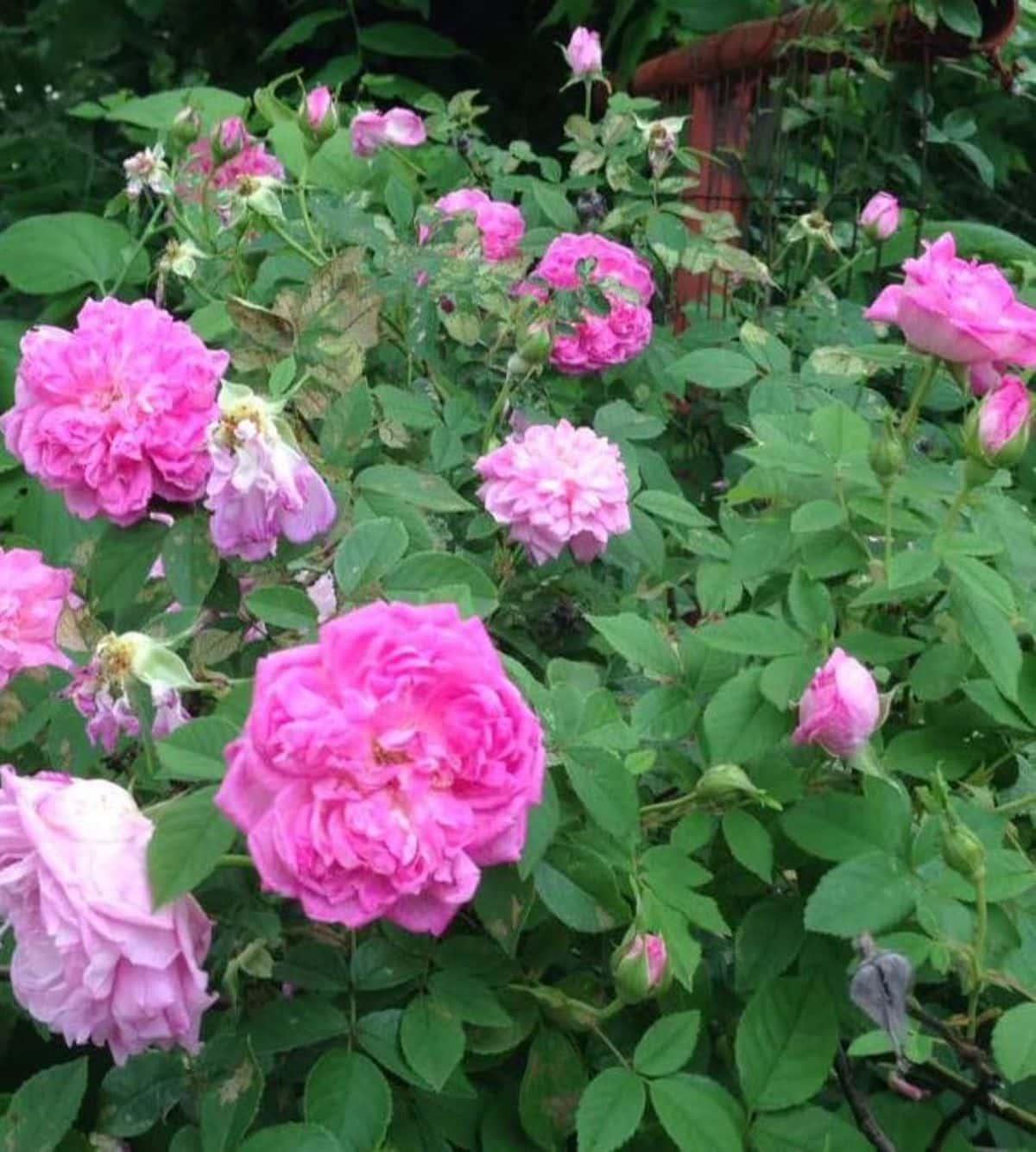
Back in the 1980s, a bunch of Texas rosarians who called themselves the Texas Rose Rustlers were driving the back roads looking for old, abandoned farms to find old garden roses.
They turned to antique roses because they were fed up with modern tea roses that had to be continually coddled. They wanted vigorous growers that sported the lush, fragrant blossoms of the old roses.
What could be more vigorous than an old, abandoned rose that was flourishing despite years of neglect?
They started a push for finding the old roses and reviving them. Rustlers would search through deserted homesteads, abandoned farmhouses, overgrown fields, old cemeteries, and other places in hopes of finding where an old rose might have survived.
They took cuttings of the roses growing there and recorded them. They were finding roses that had been in commerce as far back as 1836, and they shared these cuttings with anybody who was interested in growing those roses.
Preserving Antique and Heirloom Roses
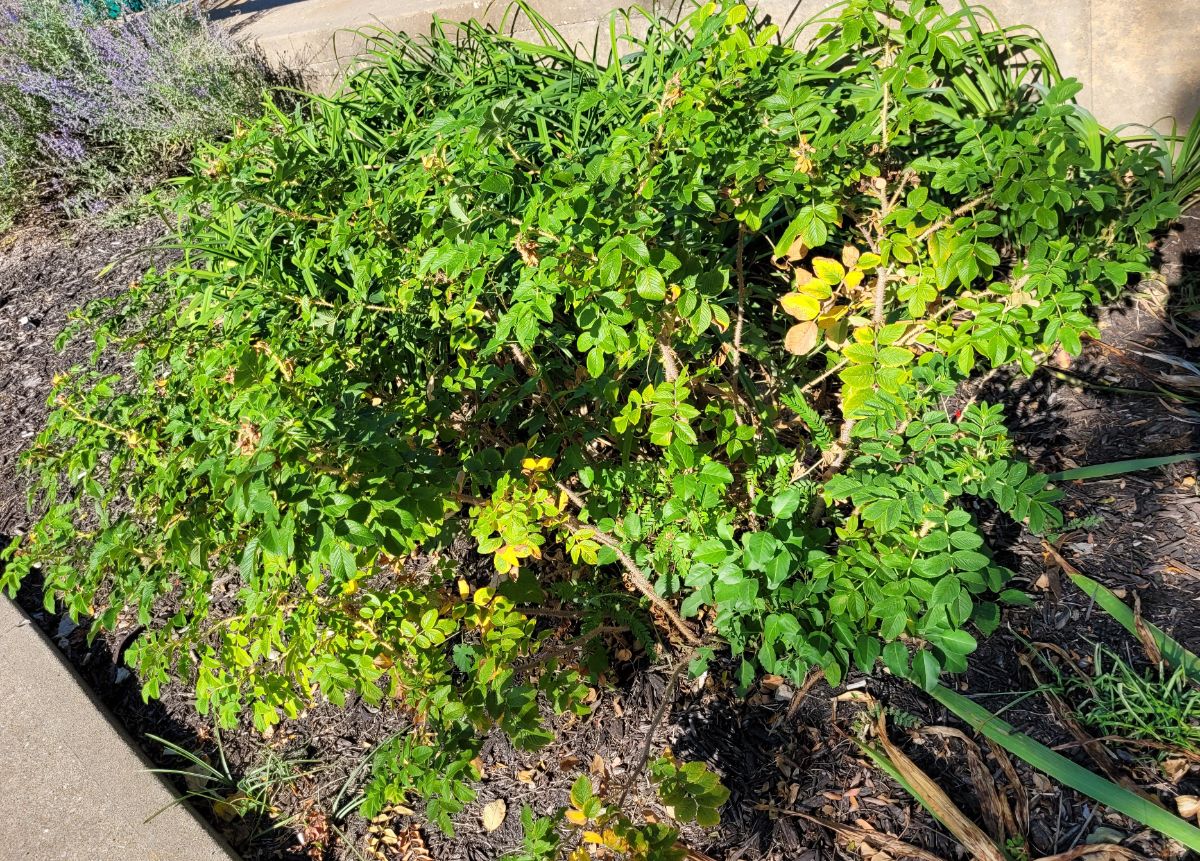
The work of dedicated folks saving roses isn’t limited to Texas. In California, a number of people have become rose preservationists. One of the most comprehensive multiple-class collections of old roses ever assembled is in Sebastopol, California, through The Friends of Vintage Roses. If you’re in the area, they’ll sell roses for local pickup to provide plants to those interested in helping preserve their historic rose collection.
There are folks all over the world working to find and preserve old roses. See if there’s a chapter near you that you can join!
Rose Patents … And You
First, an important tip: Don’t take cuttings from patented roses! The United States Patent Office has made this illegal.
Rose hybridizers take years to develop roses – sometimes decades – and they should absolutely be paid for their hard work.
This rule also applies to roses that you clip for your own personal use and any roses that you give away for free.
Most rose patents expire after 20 years – so the best way to stay out of trouble is to take cuttings from roses that have been growing for at least 25 years.
The American Rose Society has an article that really dives into the issues of plant patents and when it’s legally acceptable to take cuttings of roses.
The ARS has the Modern Rose database, which contains the records of official, internationally-recognized rose varieties. If you know the name of your rose, you can look it up here and see if it’s patented.
Help Me Find has even more extensive listings of roses, including alternate names, though sometimes patent information is spotty.
Rules of the Road for Rose Rustlers

- It IS better to ask permission than to get forgiveness!
If the rose is on private property, ask permission to take cuttings. Most people are very sweet and are happy to help if you explain that you’d love to take cuttings and try to grow the beautiful old rose. They can even give you helpful information about the rose – when it was planted, who planted it, and the rose’s name, if they know it.
Even if they don’t know the name, information about when the rose might have been planted or who used to live in the house can help clue you in as to how old the rose is.
- Never desecrate the site of a found rose.
Respect the rose and the site where it’s growing. Don’t hack the rose up when taking cuttings, and leave the site looking better than when you arrived.
Take photographs of the rose, too, when you take cuttings, so you know what kind of form to expect and what kind of flowers it has if it’s blooming.
- Always leave the parent rose in better condition than you found it.
Don’t chop up the rose to get clippings. Take only what you need. Help out the parent rose by knocking down the weeds around it and prune out deadwood before you leave.
Propagating an Old Rose

First, gather your supplies.
What you need:
- Garden Pruners (sharp)
- Rose gauntlets
- Rubbing alcohol or disinfectant wipes to sterilize pruners after each cut
- A bucket of water
- Rooting hormone
- Plastic bags
- Potting mix
- Little pots 3 to 4 inches deep (or cups with holes punched in the bottom)
- Watering can
- A book about raising roses
- For those of you who are going out into the sticks, bring along a few extra supplies:
- Insect repellent
- Long-sleeved shirts
- Poison ivy cure
- Sturdy boots
- Duct tape: During tick season, tuck your jeans into your socks, then wrap duct tape around the seams to make them tick-proof.
Keep the duct tape on you. If in spring you suddenly get a bunch of “crawlers” or “seed ticks” on you, wind some duct tape around your hand, sticky side out, and pat it over the baby ticks until they’re all stuck on the tape.
How to Take Cuttings from Antique Roses

There are many ways to take cuttings, and most rose growers have a method they particularly swear by.
The best times to take softwood rose cuttings are in spring and in fall when the plant cells are most active. Choose pliable soft-wooded shoots about the width of a pencil with at least four strong buds in the leaf joints. Make a cutting that is four or five inches long – and strip off all the leaves because leaves will wick moisture out of the cutting before it’s able to create roots.
Some rosarians state that the cuttings are more likely to take if they have a “heel” attached at its base. (The heel is a bit of the woody stem that the shoot came off of.)
Also, take cuttings from a part of the rose that has already bloomed because these will root more reliably.
When potting the rose, put as many leaf nodes underground as possible, but keep two nodes above the soil’s surface.
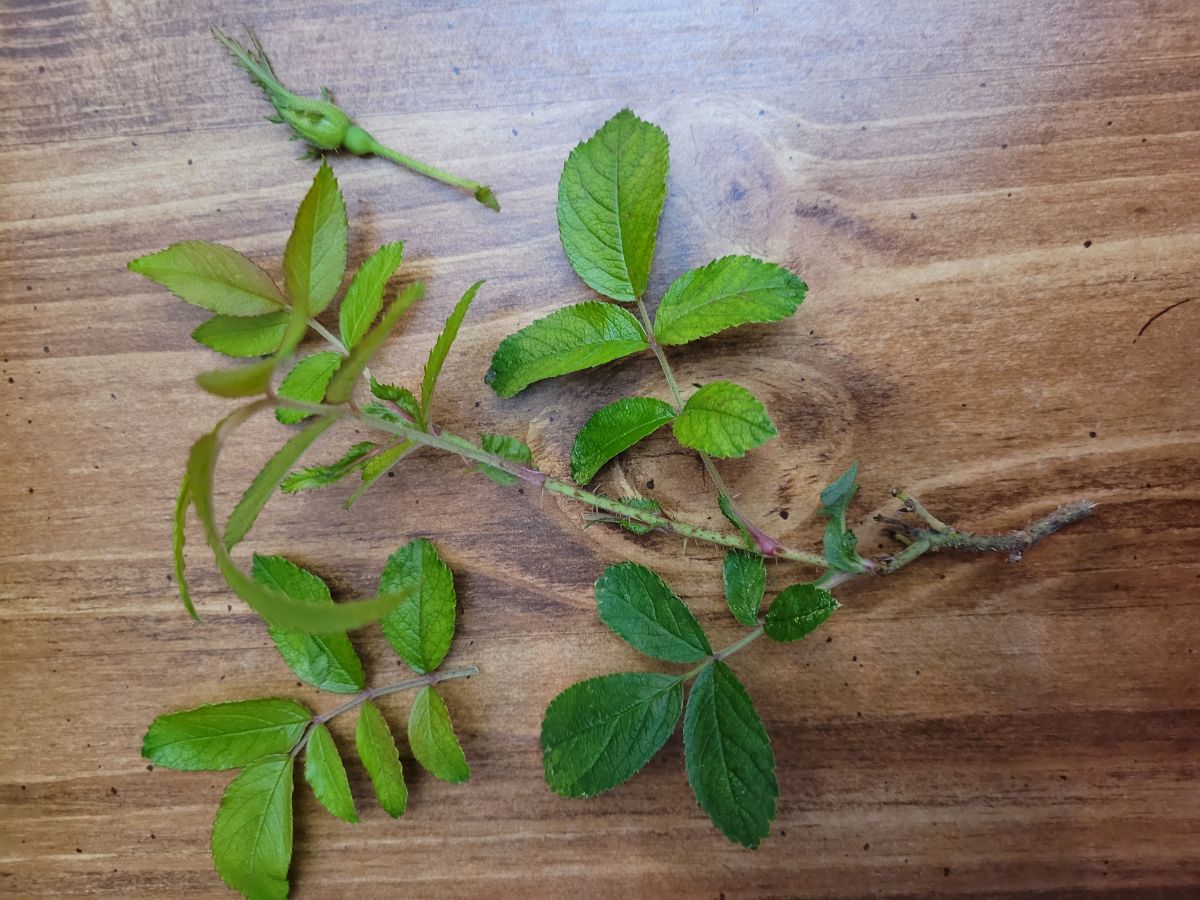
Morning is the best time to take cuttings, if possible. The rose stems are full of water then. Always take more rose cuttings than you need. Propagation is an imperfect art, relying on the vagaries of weather, watering, disease, and the temperament of the rose itself.
Something that might help the rose cuttings take root is willow water. To make it, fill a small bucket with a few inches of water, then cut a couple of willow shoots into matchstick-sized pieces and drop them in the bucket. Let them soak overnight. The next day, when you take the rose cuttings, soak the bottom three inches of these cuttings in this water for several hours. The willow contains a rooting hormone that encourages the rose cuttings to start developing roots.
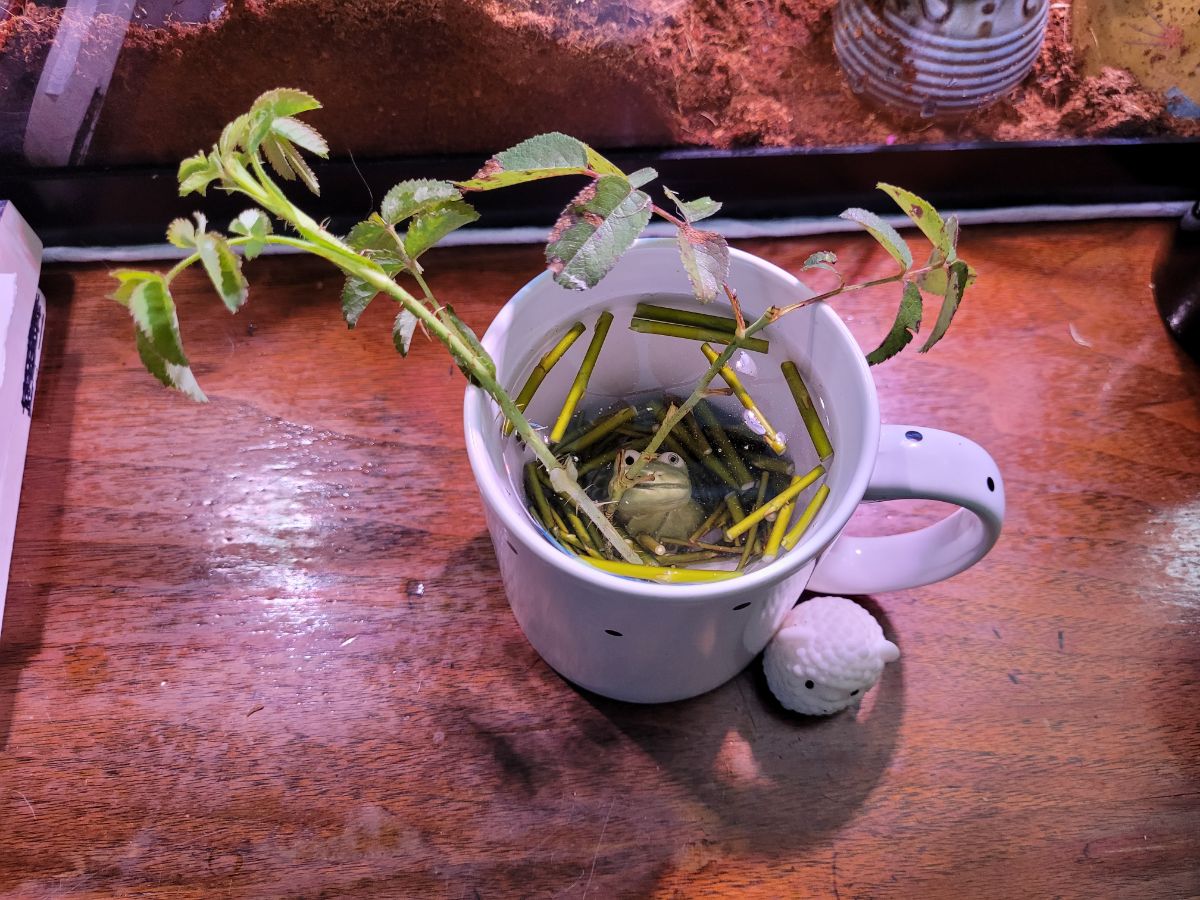
Powdered rooting hormone is a quicker way to help rose cuttings root. Dip the cutting in rooting solution and pot it in a 4 or 6-inch pot in a mix of sand and peat moss. Plant it with at least two buds under the ground, preferably more, and at least two above. Wrap the pot and cutting in a clear plastic bag and tie it shut. Keep it in a shaded or dark room. Check the soil and make sure it stays moist.
Rooting a rose calls for cool temperatures, a moist rooting medium, and shade. I have successfully rooted roses in peat moss in a wheelbarrow left in a cool tool shed. (I’d buried them there and had forgotten about them until I needed the extra wheelbarrow.)

Roots should form in three to four weeks. You’ll know they’ve rooted when the rose clippings grow new leaves. After that, fertilize the cuttings with a weak kelp emulsion fertilizer, half strength, about once a month. (Other liquid fertilizers work, too, just as long as they’re at half-strength.)
If you take your cuttings in the fall, probably the very best thing to do is put them someplace where they’re not disturbed and forget about the cuttings until next spring. Don’t mess with them; just let them grow.
Once the rose cuttings have been putting out new leaves for a while, transplant them into bigger pots with regular soil mix and move them outside. Early fall is a good time to plant the rose in your garden. Mulch it well when winter comes.
You don’t even have to do all the above to take a cutting. In The Practical Garden-Book (1900), the author states: “The writer has known women who could root Roses with the greatest ease. They would simply break off a branch of the Rose, insert it in the flower bed, cover it with a bell jar, and in a few weeks, they would have a strong plant.”
This is probably the best low-effort solution if you’re pressed for time (and if you have light, loose soil to make rooting easier). You can even substitute half of a two-liter bottle of pop for the glass jar.
How to Use Tip-Layering to Propagate Old Roses
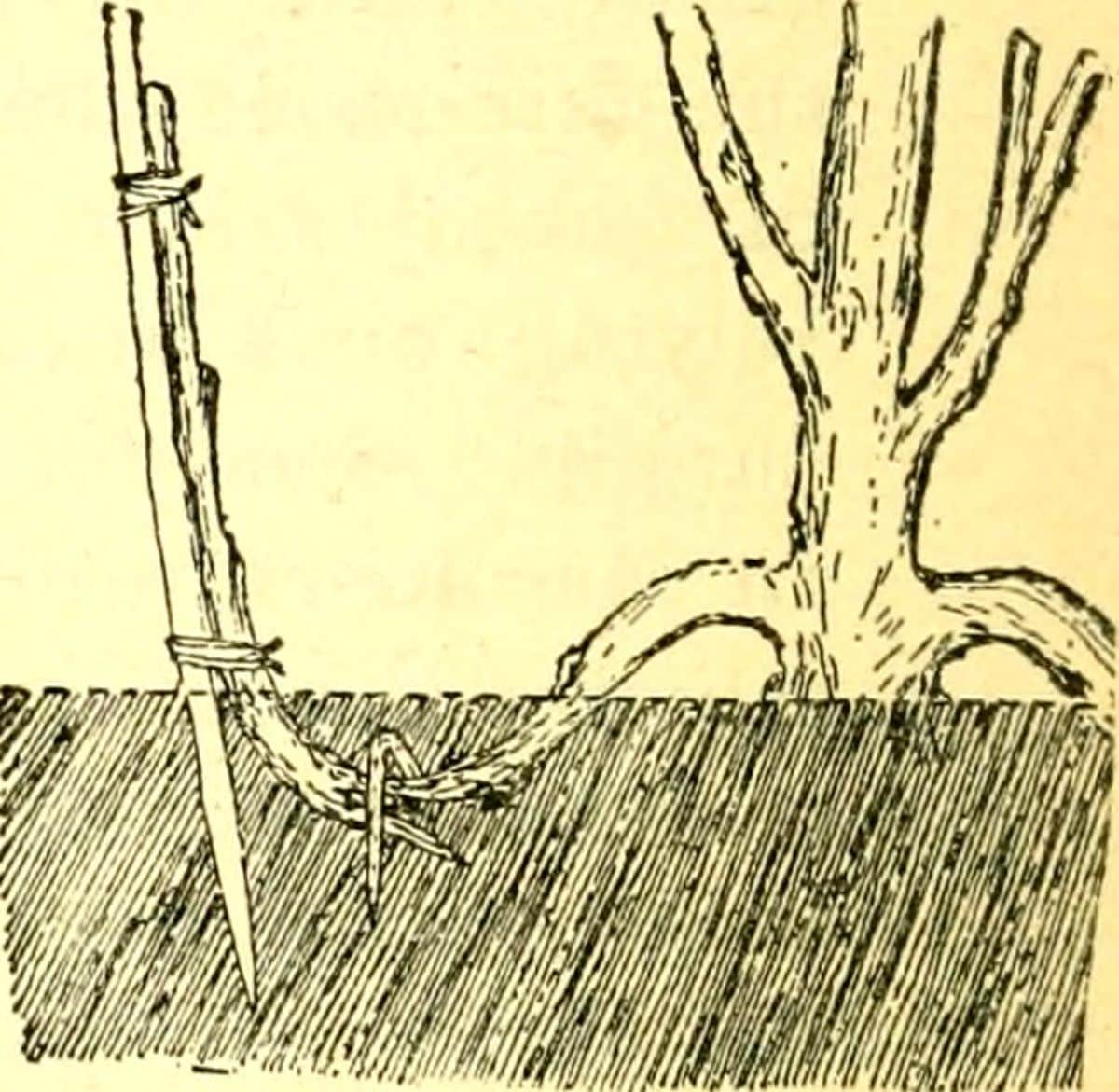
If you have time and can return to your old garden rose in a few weeks, then layering is a great way to propagate it. In this method, the baby plant is still attached to the parent while its new roots are growing.
Tip-layering is a super-effective method of propagation that gives you bigger plants and a better start.
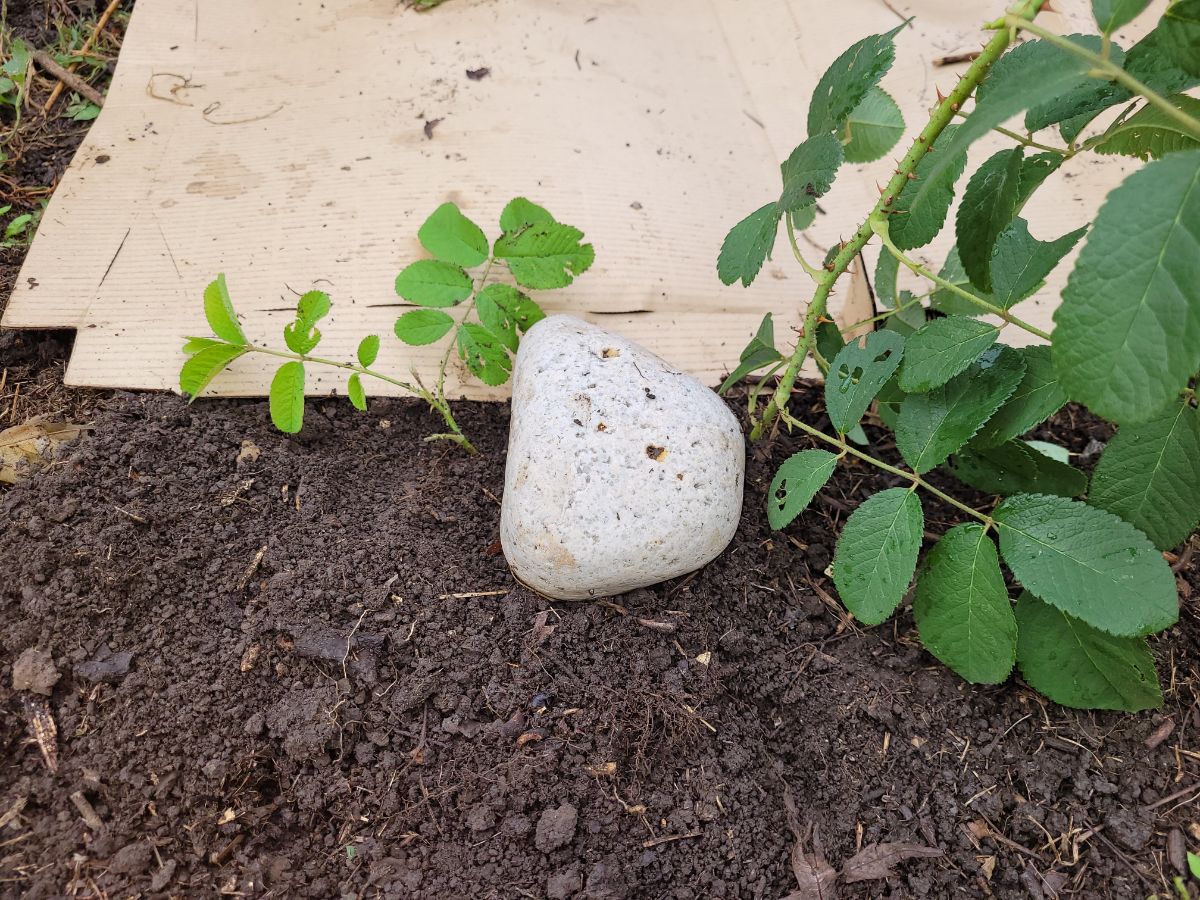
Take a pliable cane and bend it to the ground. Make a small cut just below a bud eye where the cane touches the soil. Bury the cut portion in about four inches of dirt, and put a brick on it so it won’t pop out of the ground. You can also use a forked stick or bent piece of metal to “peg down” the layer.
Water the soil weekly. After three or four weeks, you should see the little branch start to grow. That’s how you know that your layer has formed roots.
Give it a little extra time to grow more roots, then snip it off the parent plant and pot it.
Tip-layering is an almost foolproof way to make a cutting.
Propagating Old Garden Roses with Suckers
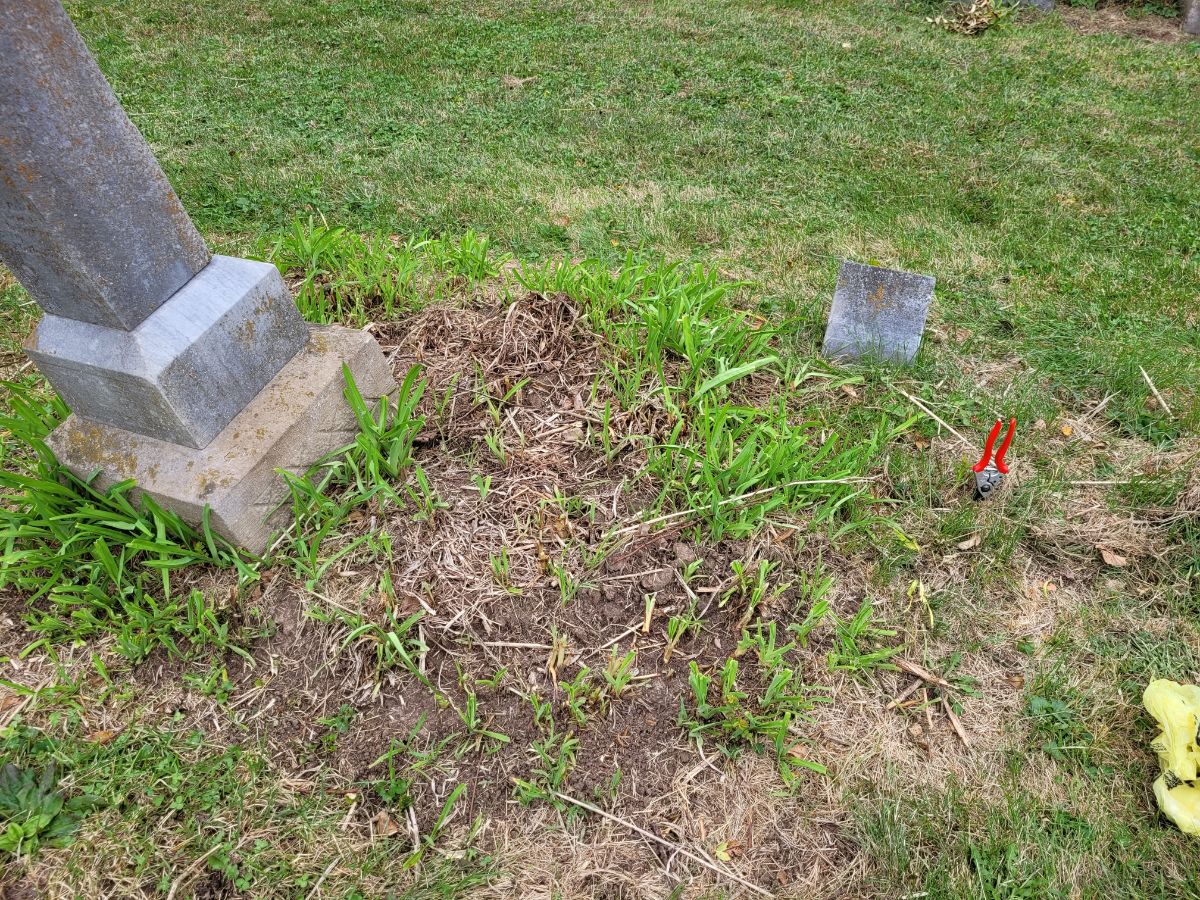
A number of old roses will send out suckers – underground stems – to send up new shoots nearby. Rugosa roses are notorious for suckering and popping up new baby roses halfway across your yard just to show you who’s in charge. Then you mow it down to show the rose who is really in charge.
But suckers are a good way to propagate these antique roses.
When I went to my old church cemetery to get cuttings from the two old roses that had been hiding out in the daylilies, I was shocked to find the daylilies – and roses – had been leveled with a weed-eater.
I searched for rose bits and found some so much for taking cuttings. I would dig up the suckers and take them home and grow them.
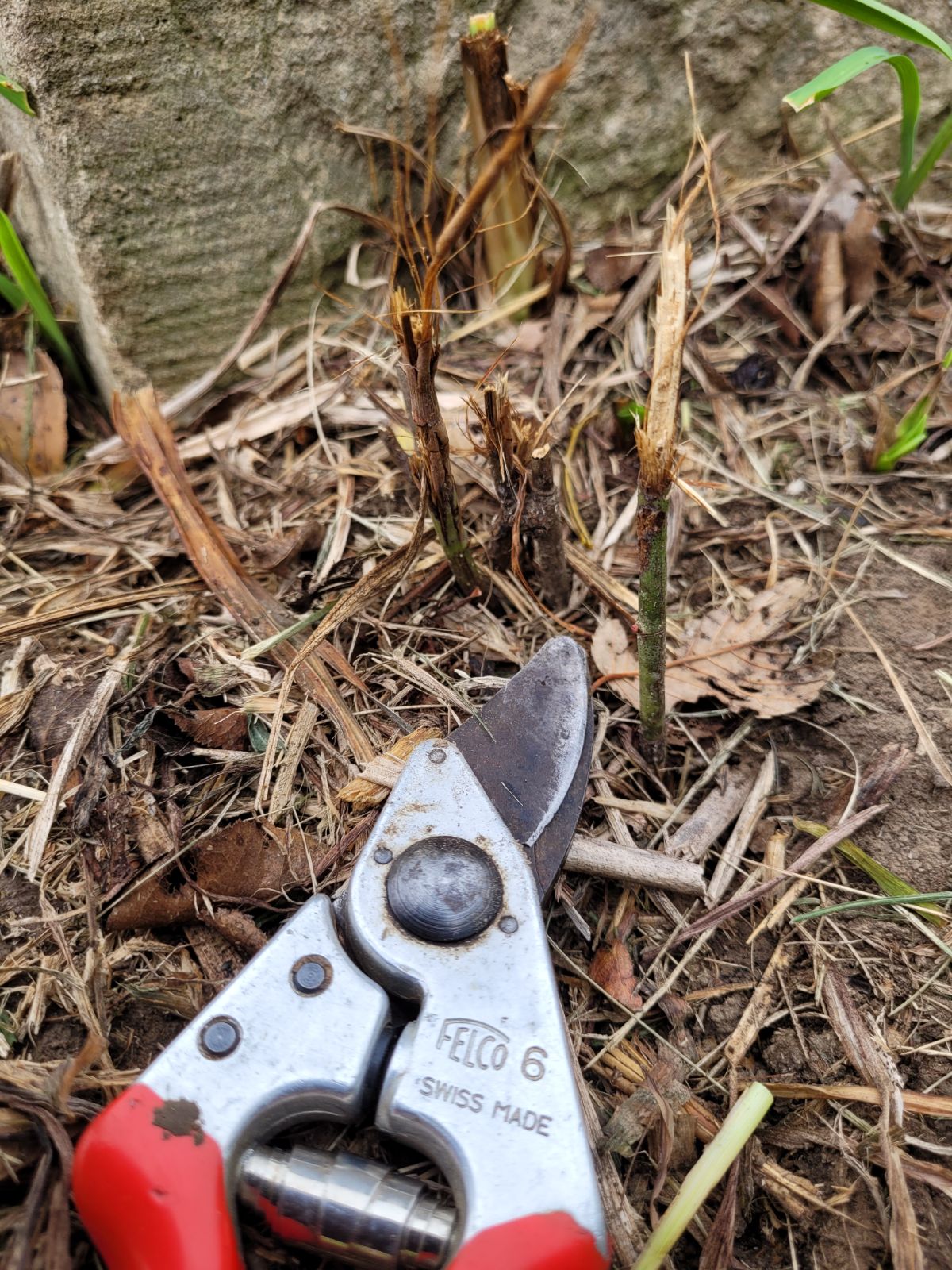
Each rose bit I found, I pushed the shovel into the ground around it on all sides, attempting to pry it up each time, but the sucker held it in the ground. Then I cleared the soil away to find the sucker and hopefully some roots. Even if there were few roots, the dug-up rose would have a better chance of survival than a cutting.
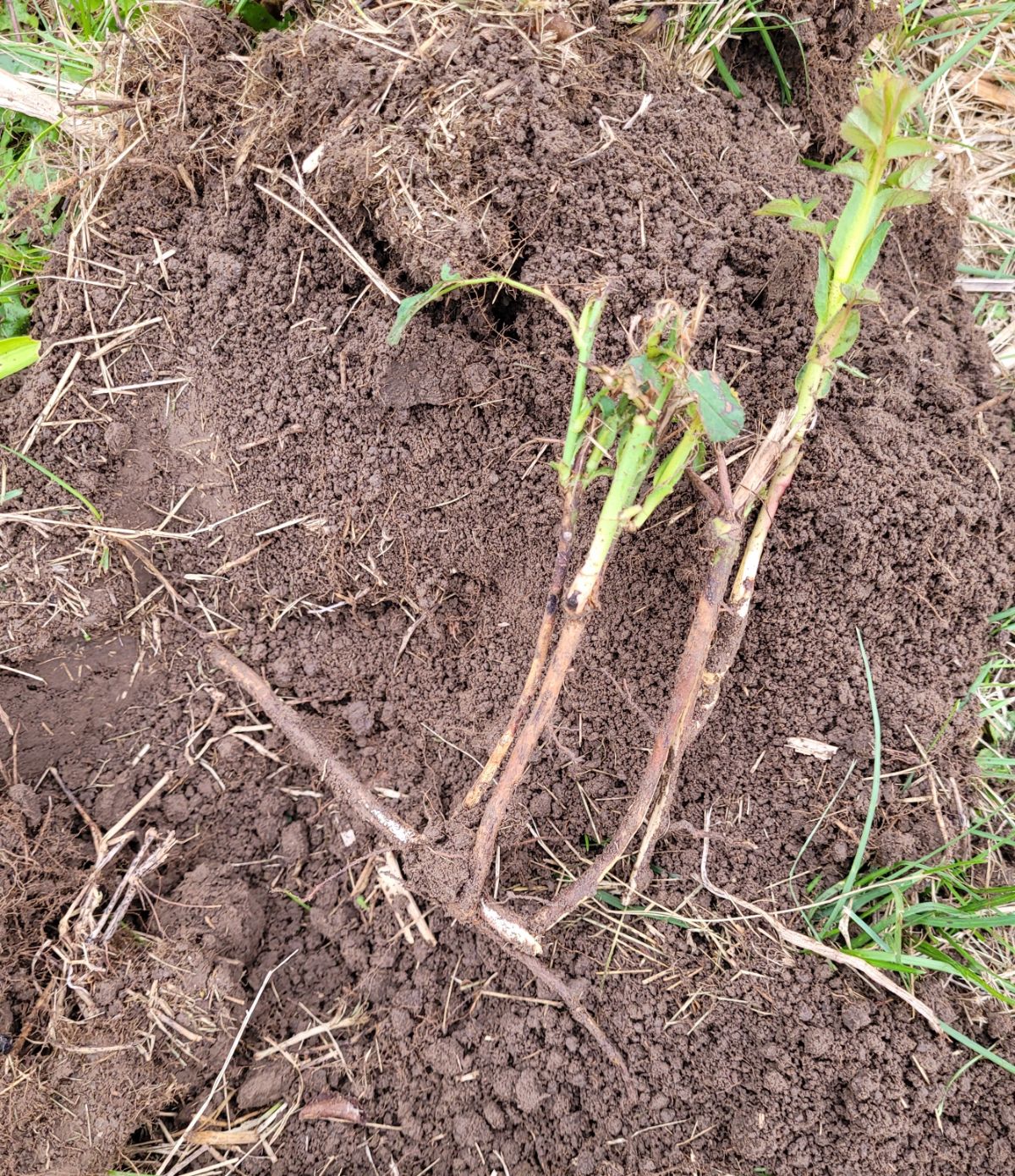
I’d try to get the largest piece of sucker I could for each rose, usually about five or six inches. The suckers didn’t have much in the way of roots, but they weren’t going to be developing any roots if they stayed here, that was for sure.
At least at home, I could keep them cool and shaded, and I could water them with stuff to encourage root growth.
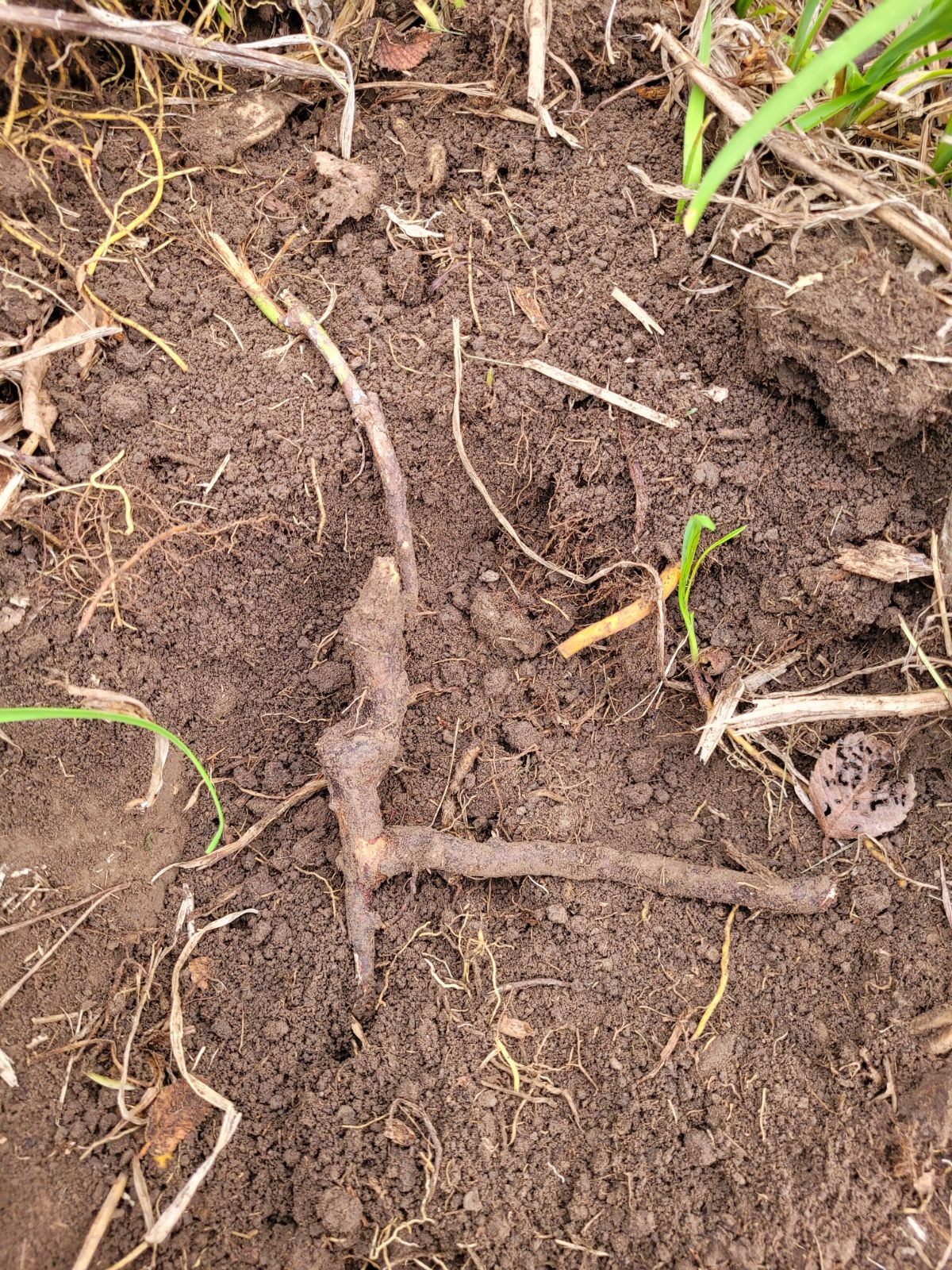
I dug up all the suckers I could find but left the parent rose (what was left of it) for another day. I marked it with some yucca branches and a little orange flag in hopes that nobody would disturb it further.
I felt lucky to even get these rose bits. I hadn’t been able to find any other roses at this cemetery except for two tiny multiflora roses that had likely sprouted from a seed and then one rose that was cuddled up to a nearby gravestone.
That rose was protected by an old peony and a second marker right next to it, so I pulled all the weeds from around it and mulched it with a thick layer of grass.
There didn’t seem to be any suckers from this one and not enough material for a cutting, but that’s okay. I will be coming back to it to give it a proper layer of mulch, some compost, a lot of water, and rocks to protect it from weedeaters and what-have-you.

When I got my rose bits home, I put them into a bucket of water with organic fertilizer to soak overnight, and they perked up. The next morning, I put them out into the garden in a shady location so they could be comfortable and grow some roots over the winter. I had about 10 rose bits altogether – hopefully, they will start sprouting next spring.
Once they get growing well, I’ll bring two of them back to the old cemetery and plant them next to Elisabeth Kurz’s stone, where they came from.
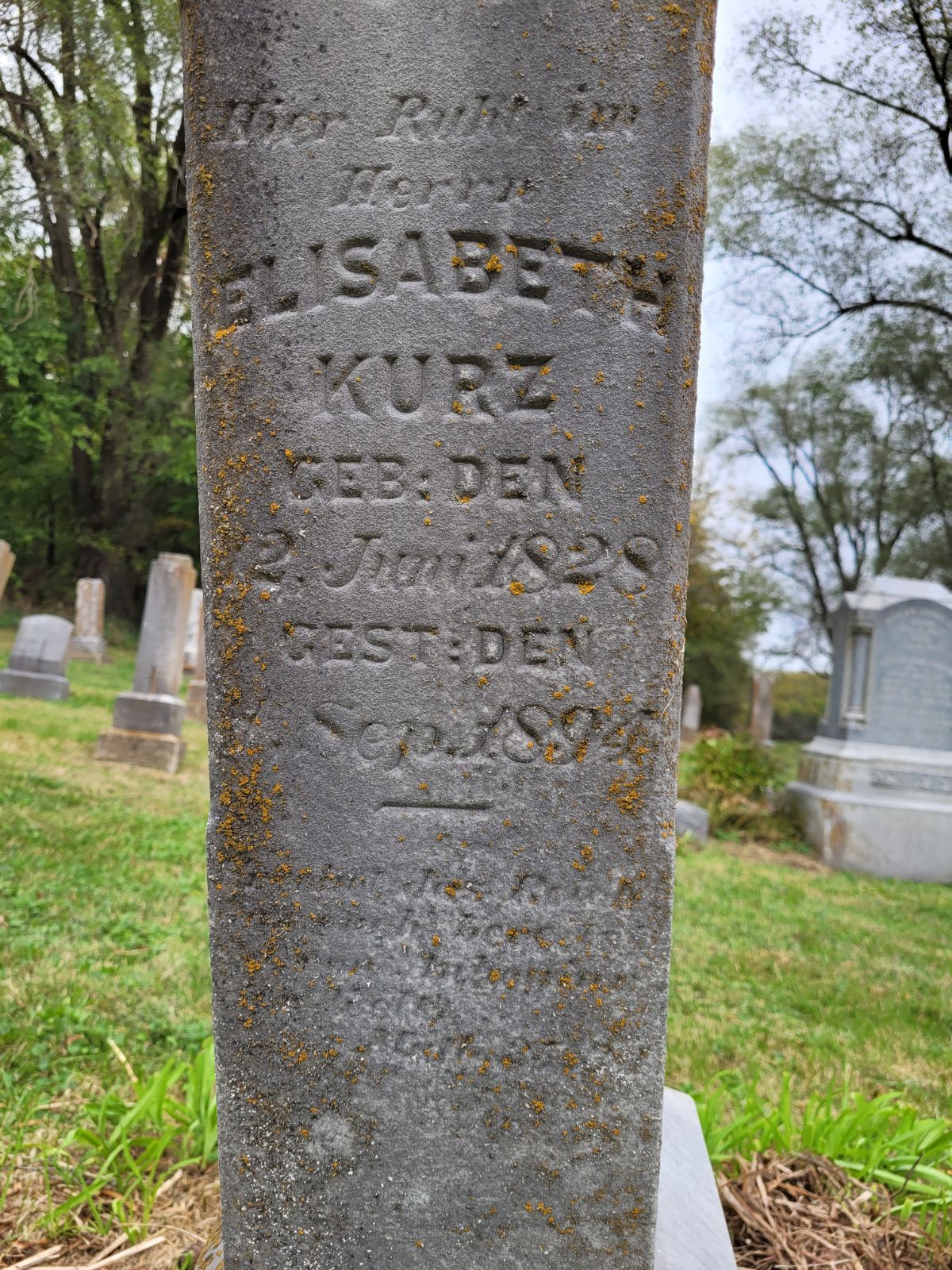

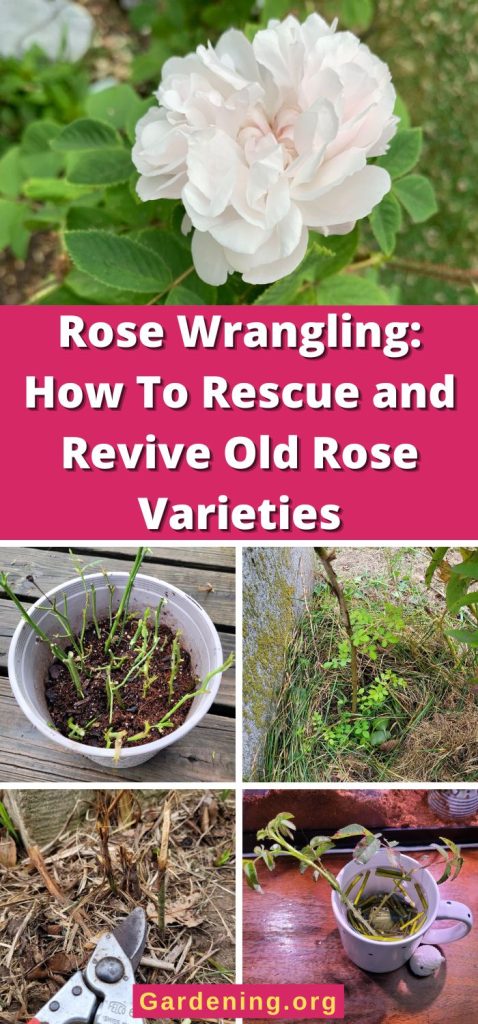
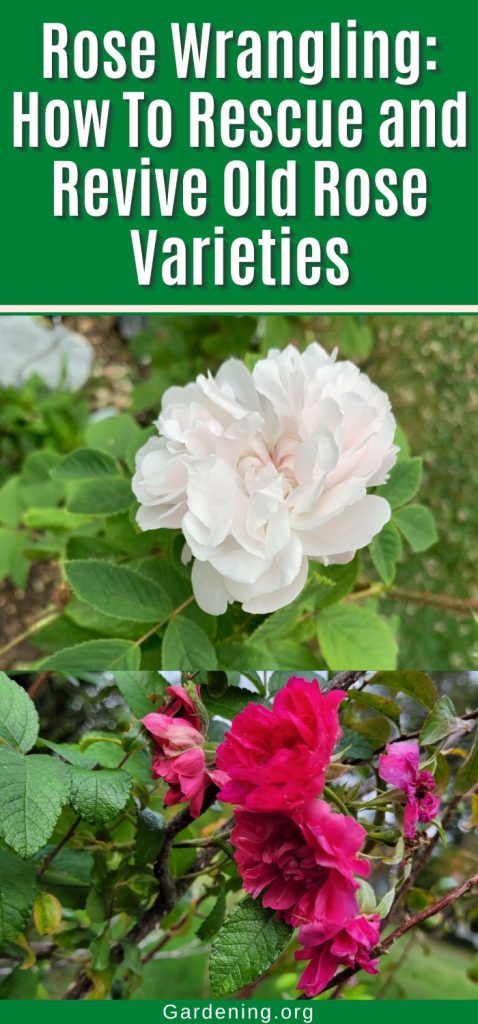
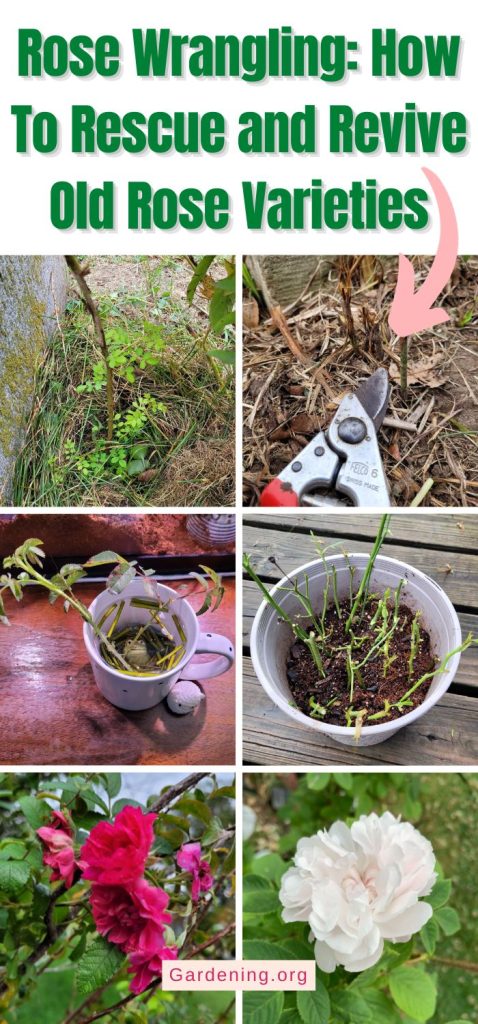
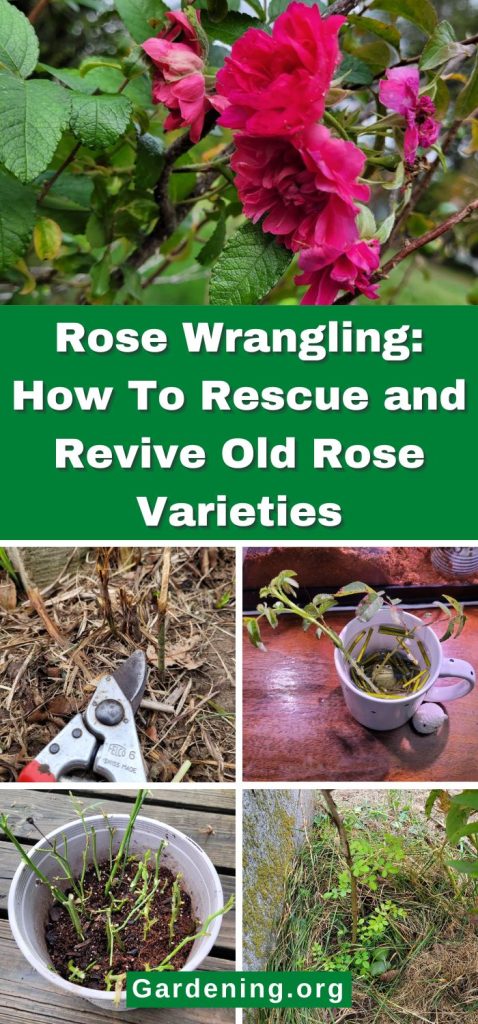




Leave a Reply